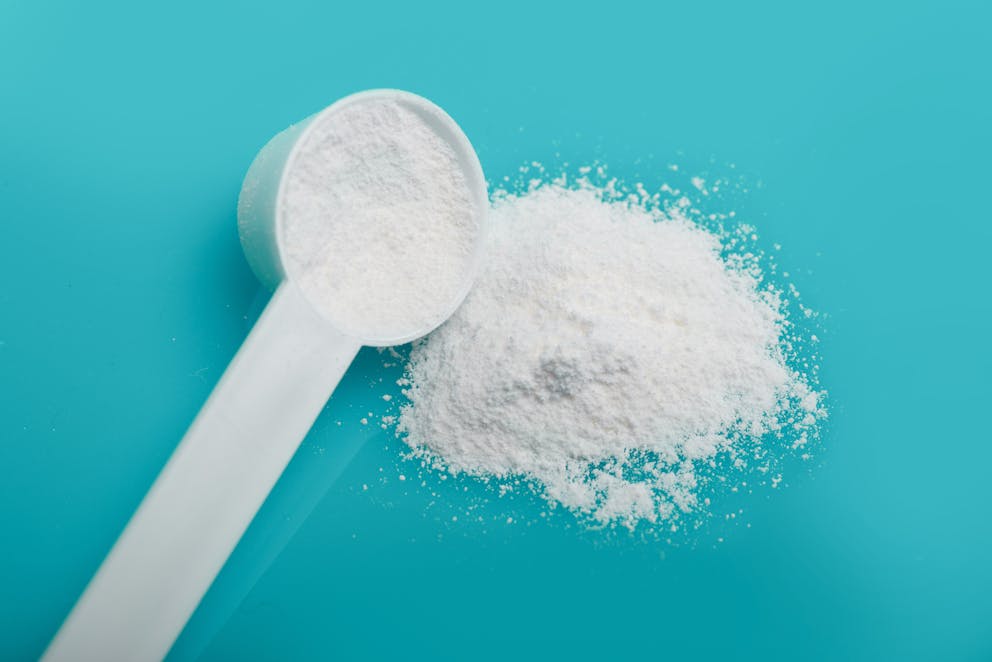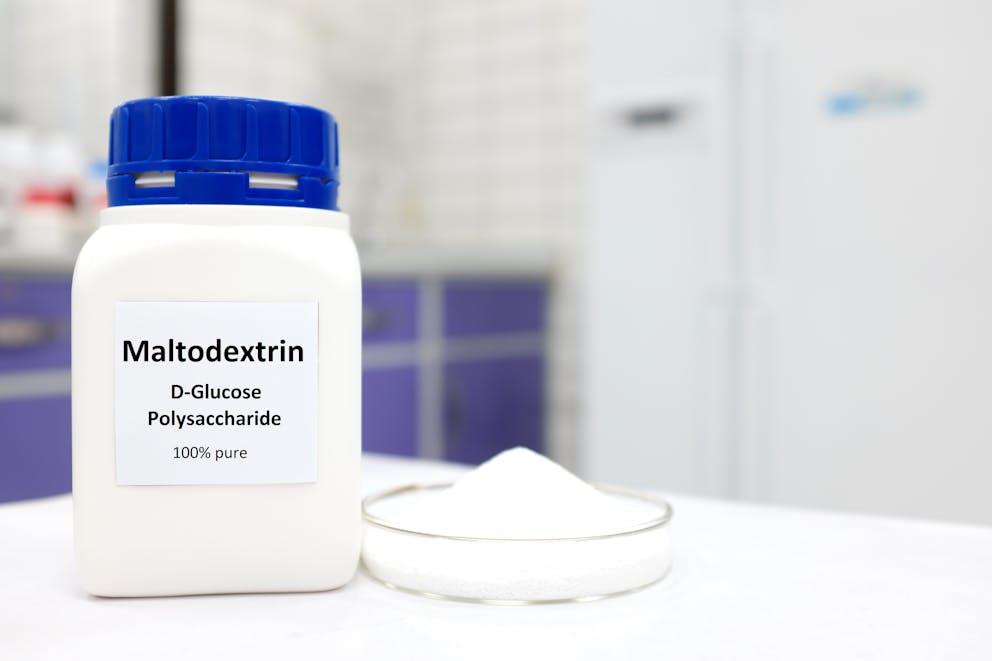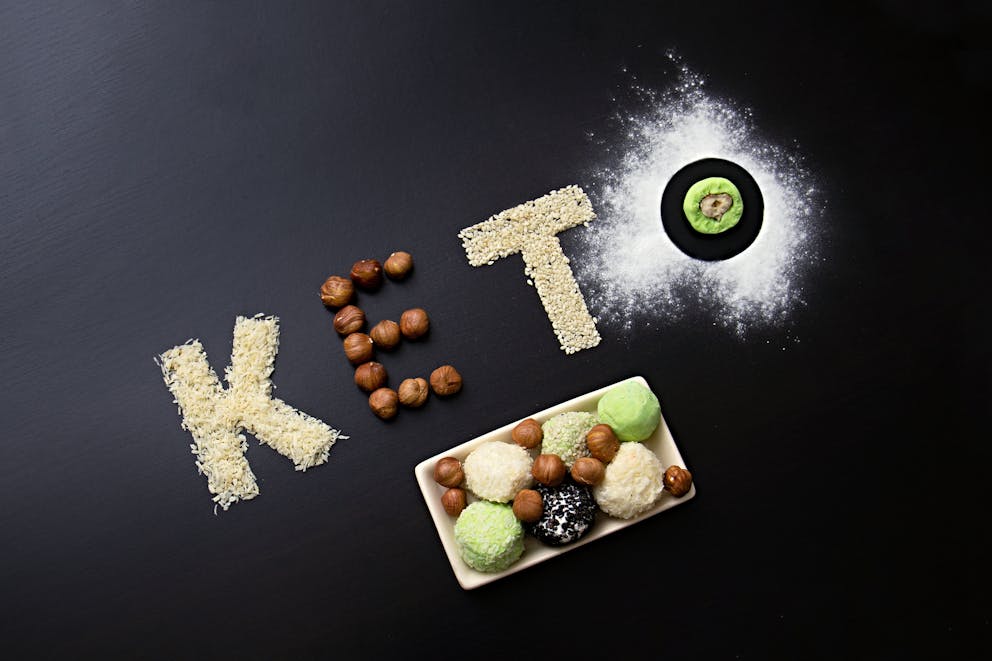Is Maltodextrin Keto-Friendly?

4 Dangerous Ingredients to Avoid – Wallet Cutout Card
Identify harmful ingredients hidden in processed foods
Learn to recognize and identify these ingredients on food labels
Get a practical wallet cutout for quick reference while shopping or dining out

4 Dangerous Ingredients to Avoid – Wallet Cutout Card
Identify harmful ingredients hidden in processed foods
Learn to recognize and identify these ingredients on food labels
Get a practical wallet cutout for quick reference while shopping or dining out

4 Dangerous Ingredients to Avoid – Wallet Cutout Card
Identify harmful ingredients hidden in processed foods
Learn to recognize and identify these ingredients on food labels
Get a practical wallet cutout for quick reference while shopping or dining out

4 Dangerous Ingredients to Avoid – Wallet Cutout Card
Identify harmful ingredients hidden in processed foods
Learn to recognize and identify these ingredients on food labels
Get a practical wallet cutout for quick reference while shopping or dining out

4 Dangerous Ingredients to Avoid – Wallet Cutout Card
Identify harmful ingredients hidden in processed foods
Learn to recognize and identify these ingredients on food labels
Get a practical wallet cutout for quick reference while shopping or dining out

4 Dangerous Ingredients to Avoid – Wallet Cutout Card
Identify harmful ingredients hidden in processed foods
Learn to recognize and identify these ingredients on food labels
Get a practical wallet cutout for quick reference while shopping or dining out

4 Dangerous Ingredients to Avoid – Wallet Cutout Card
Identify harmful ingredients hidden in processed foods
Learn to recognize and identify these ingredients on food labels
Get a practical wallet cutout for quick reference while shopping or dining out

4 Dangerous Ingredients to Avoid – Wallet Cutout Card
Identify harmful ingredients hidden in processed foods
Learn to recognize and identify these ingredients on food labels
Get a practical wallet cutout for quick reference while shopping or dining out

4 Dangerous Ingredients to Avoid – Wallet Cutout Card
Identify harmful ingredients hidden in processed foods
Learn to recognize and identify these ingredients on food labels
Get a practical wallet cutout for quick reference while shopping or dining out

4 Dangerous Ingredients to Avoid – Wallet Cutout Card
Identify harmful ingredients hidden in processed foods
Learn to recognize and identify these ingredients on food labels
Get a practical wallet cutout for quick reference while shopping or dining out

4 Dangerous Ingredients to Avoid – Wallet Cutout Card
Identify harmful ingredients hidden in processed foods
Learn to recognize and identify these ingredients on food labels
Get a practical wallet cutout for quick reference while shopping or dining out

4 Dangerous Ingredients to Avoid – Wallet Cutout Card
Identify harmful ingredients hidden in processed foods
Learn to recognize and identify these ingredients on food labels
Get a practical wallet cutout for quick reference while shopping or dining out

4 Dangerous Ingredients to Avoid – Wallet Cutout Card
Identify harmful ingredients hidden in processed foods
Learn to recognize and identify these ingredients on food labels
Get a practical wallet cutout for quick reference while shopping or dining out

4 Dangerous Ingredients to Avoid – Wallet Cutout Card
Identify harmful ingredients hidden in processed foods
Learn to recognize and identify these ingredients on food labels
Get a practical wallet cutout for quick reference while shopping or dining out

4 Dangerous Ingredients to Avoid – Wallet Cutout Card
Identify harmful ingredients hidden in processed foods
Learn to recognize and identify these ingredients on food labels
Get a practical wallet cutout for quick reference while shopping or dining out

Maltodextrin – #1 Worst Ingredient Hiding in Your Foods
Discover why maltodextrin is a highly problematic ingredient found in processed foods
Understand the detrimental impact of maltodextrin on metabolic health and weight gain
Learn about hidden sources of maltodextrin and how to spot this harmful ingredient on labels
Explore why the food industry uses maltodextrin extensively and how labeling practices allow it to go unnoticed

Maltodextrin – #1 Worst Ingredient Hiding in Your Foods
Discover why maltodextrin is a highly problematic ingredient found in processed foods
Understand the detrimental impact of maltodextrin on metabolic health and weight gain
Learn about hidden sources of maltodextrin and how to spot this harmful ingredient on labels
Explore why the food industry uses maltodextrin extensively and how labeling practices allow it to go unnoticed

Maltodextrin – #1 Worst Ingredient Hiding in Your Foods
Discover why maltodextrin is a highly problematic ingredient found in processed foods
Understand the detrimental impact of maltodextrin on metabolic health and weight gain
Learn about hidden sources of maltodextrin and how to spot this harmful ingredient on labels
Explore why the food industry uses maltodextrin extensively and how labeling practices allow it to go unnoticed

Maltodextrin – #1 Worst Ingredient Hiding in Your Foods
Discover why maltodextrin is a highly problematic ingredient found in processed foods
Understand the detrimental impact of maltodextrin on metabolic health and weight gain
Learn about hidden sources of maltodextrin and how to spot this harmful ingredient on labels
Explore why the food industry uses maltodextrin extensively and how labeling practices allow it to go unnoticed

Maltodextrin – #1 Worst Ingredient Hiding in Your Foods
Discover why maltodextrin is a highly problematic ingredient found in processed foods
Understand the detrimental impact of maltodextrin on metabolic health and weight gain
Learn about hidden sources of maltodextrin and how to spot this harmful ingredient on labels
Explore why the food industry uses maltodextrin extensively and how labeling practices allow it to go unnoticed

Maltodextrin – #1 Worst Ingredient Hiding in Your Foods
Discover why maltodextrin is a highly problematic ingredient found in processed foods
Understand the detrimental impact of maltodextrin on metabolic health and weight gain
Learn about hidden sources of maltodextrin and how to spot this harmful ingredient on labels
Explore why the food industry uses maltodextrin extensively and how labeling practices allow it to go unnoticed

Maltodextrin – #1 Worst Ingredient Hiding in Your Foods
Discover why maltodextrin is a highly problematic ingredient found in processed foods
Understand the detrimental impact of maltodextrin on metabolic health and weight gain
Learn about hidden sources of maltodextrin and how to spot this harmful ingredient on labels
Explore why the food industry uses maltodextrin extensively and how labeling practices allow it to go unnoticed

Maltodextrin – #1 Worst Ingredient Hiding in Your Foods
Discover why maltodextrin is a highly problematic ingredient found in processed foods
Understand the detrimental impact of maltodextrin on metabolic health and weight gain
Learn about hidden sources of maltodextrin and how to spot this harmful ingredient on labels
Explore why the food industry uses maltodextrin extensively and how labeling practices allow it to go unnoticed

Maltodextrin – #1 Worst Ingredient Hiding in Your Foods
Discover why maltodextrin is a highly problematic ingredient found in processed foods
Understand the detrimental impact of maltodextrin on metabolic health and weight gain
Learn about hidden sources of maltodextrin and how to spot this harmful ingredient on labels
Explore why the food industry uses maltodextrin extensively and how labeling practices allow it to go unnoticed

Maltodextrin – #1 Worst Ingredient Hiding in Your Foods
Discover why maltodextrin is a highly problematic ingredient found in processed foods
Understand the detrimental impact of maltodextrin on metabolic health and weight gain
Learn about hidden sources of maltodextrin and how to spot this harmful ingredient on labels
Explore why the food industry uses maltodextrin extensively and how labeling practices allow it to go unnoticed

Maltodextrin – #1 Worst Ingredient Hiding in Your Foods
Discover why maltodextrin is a highly problematic ingredient found in processed foods
Understand the detrimental impact of maltodextrin on metabolic health and weight gain
Learn about hidden sources of maltodextrin and how to spot this harmful ingredient on labels
Explore why the food industry uses maltodextrin extensively and how labeling practices allow it to go unnoticed

Maltodextrin – #1 Worst Ingredient Hiding in Your Foods
Discover why maltodextrin is a highly problematic ingredient found in processed foods
Understand the detrimental impact of maltodextrin on metabolic health and weight gain
Learn about hidden sources of maltodextrin and how to spot this harmful ingredient on labels
Explore why the food industry uses maltodextrin extensively and how labeling practices allow it to go unnoticed

Maltodextrin – #1 Worst Ingredient Hiding in Your Foods
Discover why maltodextrin is a highly problematic ingredient found in processed foods
Understand the detrimental impact of maltodextrin on metabolic health and weight gain
Learn about hidden sources of maltodextrin and how to spot this harmful ingredient on labels
Explore why the food industry uses maltodextrin extensively and how labeling practices allow it to go unnoticed

Maltodextrin – #1 Worst Ingredient Hiding in Your Foods
Discover why maltodextrin is a highly problematic ingredient found in processed foods
Understand the detrimental impact of maltodextrin on metabolic health and weight gain
Learn about hidden sources of maltodextrin and how to spot this harmful ingredient on labels
Explore why the food industry uses maltodextrin extensively and how labeling practices allow it to go unnoticed

Maltodextrin – #1 Worst Ingredient Hiding in Your Foods
Discover why maltodextrin is a highly problematic ingredient found in processed foods
Understand the detrimental impact of maltodextrin on metabolic health and weight gain
Learn about hidden sources of maltodextrin and how to spot this harmful ingredient on labels
Explore why the food industry uses maltodextrin extensively and how labeling practices allow it to go unnoticed
Is maltodextrin keto? No, maltodextrin is not keto-friendly. This synthetic carbohydrate causes blood sugar and insulin spikes, and even small amounts of maltodextrin can quickly push you out of ketosis.
Unfortunately, maltodextrin is found in many processed foods and isn’t required to be listed as an added sugar on food labels. This can make it hard for consumers to avoid maltodextrin and its adverse effects on blood glucose regulation and metabolic health.
Learn why maltodextrin is the worst hidden sugar and which sweeteners you can safely use on a keto diet.

What is maltodextrin?
Maltodextrin is a synthetic and highly processed carbohydrate with a slightly sweet taste.
Because of its chemical structure, maltodextrin isn’t classified as a sugar, despite it being high on the glycemic index, which measures how fast a carbohydrate is absorbed and how rapidly it spikes your blood sugar levels.
The higher the glycemic index, the more impact a carb has on your blood sugar and insulin levels, which increases the risk of insulin resistance, obesity, and metabolic syndrome.
Maltodextrin isn’t as sweet as sugar but has a considerably higher glycemic index than most other carbohydrates and scores 110 on the glycemic index. In comparison, regular table sugar and brown sugar have a glycemic index of 65.
Watch the video below to find out why maltodextrin isn’t keto-friendly.
How is maltodextrin made?
Maltodextrin is produced by hydrolyzing starch derived from corn, potato, wheat, or rice, which results in an odorless white powder with a slightly sweet taste.
A process called partial hydrolysis breaks chemical bonds and shortens long chains of glucose by using heat, enzymes, or, more commonly, sulphuric acid.
Sulphuric acid is a harsh chemical that is also used to produce corn syrup and can cause gastrointestinal issues and immune reactions in sensitive individuals.

Is maltodextrin keto?
Maltodextrin isn’t keto-friendly. It’s a synthetic carbohydrate with a high glycemic index, which indicates that it raises blood sugar quickly and triggers rapid insulin spikes.
Even small amounts of maltodextrin can kick you out of ketosis and push your metabolism from fat-burning to using sugar and carbs as energy sources.
Maltodextrin nutrition facts
Maltodextrin is a highly processed carb with little nutritional value.
One teaspoon (4 grams) of maltodextrin contains:
15 calories
0 g total fat
0 g protein
4 g total carbs
0 g fiber
0 g net carbs

Common maltodextrin foods to avoid
Although maltodextrin has a greater impact on your blood glucose levels than regular sugar, it’s classified as a carbohydrate and not listed as added sugar on nutrition labels.
This makes it challenging for consumers to identify foods containing maltodextrin, leaving them at risk of high blood sugar levels and associated health implications.
Despite maltodextrin’s high glycemic index, it’s typically found in low-sugar and fat-free foods.
Here are common maltodextrin-containing foods:
Protein powders
Baked goods
Meat substitutes
Salad dressings
Soft drinks
Candy
Dietary supplements
Sports performance gels
Artificial sweeteners
Baby formula
It’s important to note that some powdered stevia products contain maltodextrin as a bulking agent to improve texture and consistency, and it’s essential to read labels to avoid maltodextrin if you are using stevia as a keto-friendly sugar alternative.

Five side effects of maltodextrin
While the Food and Drug Administration (FDA) has declared maltodextrin as a safe food additive, research published in Cellular and Molecular Gastroenterology and Hepatology suggests potential side effects linked to the intake of synthetic carbohydrates.
The authors conclude that “Consumption of the food additive maltodextrin may be a risk factor for the inflammatory bowel disease–prone population, as well as a factor promoting chronic low-grade intestinal inflammation leading to metabolic abnormalities in the general population.”
Here are five side effects of maltodextrin.
1. Insulin resistance
Maltodextrin is quickly broken down and absorbed into the bloodstream, raising blood sugar levels. This triggers the release of large amounts of insulin to balance blood glucose to avoid the harmful effects of elevated blood sugar.
Dr. Berg explains, “While insulin is needed to regulate blood sugar balance, chronically elevated insulin levels contribute to insulin resistance, a metabolic condition characterized by cellular resistance to insulin signaling.”
Insulin resistance is a serious metabolic imbalance that increases the risk of metabolic syndrome, diabetes, and obesity.
2. Weight gain
Consuming maltodextrin causes the release of insulin needed to maintain normal blood glucose levels.
Insulin is a powerful energy-regulating hormone that shifts your metabolism into fat-storage mode, which can contribute to weight gain, obesity, fatty liver, and insulin resistance.
If you experience persistent weight gain, it’s important to consult with a healthcare provider to determine underlying metabolic causes and formulate an appropriate treatment plan.
3. Gut health
Evidence published in Gut Microbes shows that maltodextrin impacts the gut’s microflora and can cause the overgrowth of harmful bacteria and yeasts in the large intestines.
Pathogenic gut bacteria can cause digestive issues, food sensitivities, intestinal inflammation, and altered immune responses, which may explain why maltodextrin consumption is linked to an increased risk of inflammatory bowel disease and Crohn’s disease.
4. Genetically modified starch
Maltodextrin is a synthetic starch typically produced from genetically modified (GMO) corn, wheat, or potatoes.
While GMO products are widely available, researchers don't understand the long-term effects of GMO products on your health yet, and consuming maltodextrin derived from GMO crops may cause adverse health implications, including gastrointestinal issues, poor liver health, and fertility problems.
5. Allergic reactions
Maltodextrin is typically derived from corn but can also be made from wheat, triggering allergic reactions in individuals with wheat or gluten intolerance.
In addition, the Journal of Nutritional Science and Vitaminology published a study that found that maltodextrin can cause gastrointestinal symptoms, such as bloating, gas, and diarrhea, and has been linked to gastrointestinal inflammation and skin issues.
Watch the video below to learn more about why you should always avoid maltodextrin.
Keto-friendly sweeteners to use instead
Maltodextrin isn’t keto-friendly and may harm your health. Luckily, you can choose from several natural keto sweeteners to satisfy occasional sugar cravings.
Here are four keto-friendly sweeteners.
1. Stevia
Stevia is a natural sweetener derived from the leaves of the Stevia rebaudiana plant. Stevia is 200 times sweeter than regular sugar but contains zero carbs and no calories.
Stevia is an excellent sweetener that works great in many keto dessert recipes. However, it’s essential to avoid powered stevia products that contain maltodextrin.
2. Monk fruit
Monk fruit sweetener is a carb-free, no-calorie sugar substitute ideal for keto.
Monk fruit extract is significantly sweeter than regular sugar but doesn’t affect blood sugar and insulin levels, making it a perfect keto-friendly sweetener that helps balance blood sugar levels and supports weight loss.
3. Erythritol
Erythritol is a sugar alcohol with a chemical composition similar to pure sugar. Erythritol isn’t digested and won’t raise blood sugar or insulin levels, and is an excellent keto-friendly option.
Compared to other sugar alcohols, erythritol leaves no bitter aftertaste and has a flavor profile similar to sugar, making it a popular choice amongst keto dieters.
4. Xylitol
Xylitol is a natural, low-carb sugar alcohol derived from birch tree bark. Although xylitol is keto-friendly, it does contain some carbs and should be added to your daily net carb count.

Key takeaways
Maltodextrin, also known as the worst hidden sugar, isn’t keto-friendly and has been linked to insulin resistance, weight gain, impaired gut health, and may cause liver problems.
Unfortunately, maltodextrin is found in an abundance of foods and often is added to low-sugar foods, including stevia powders.
To maintain ketosis and avoid adverse health implications, avoid maltodextrin-containing foods and instead choose keto-friendly natural sweeteners, including monk fruit, xylitol, and stevia.
FAQ
1. What is maltodextrin?
Maltodextrin is a synthetic carbohydrate made by hydrolyzing starch from corn, rice, potatoes, or wheat. It’s a fine white powder with a slightly sweet taste commonly used as a filler and food additive to improve processed and packaged foods' texture, flavor, and shelf life.
2. Is maltodextrin keto-friendly?
Maltodextrin isn’t keto-friendly. It’s easily broken down into glucose and rapidly absorbed into the bloodstream, which triggers the release of large amounts of insulin, quickly pushing you out of ketosis.
3. Is maltodextrin counted as carbs?
Yes, maltodextrin is a carb listed under the total carbohydrate count on nutrition labels.
If you are doing keto, maltodextrin does count toward your daily net carb intake. However, maltodextrin has a very high glycemic index and has been linked to several adverse health implications, and it’s best to avoid it altogether.
4. Does maltodextrin spike blood sugar?
Maltodextrin has a high glycemic index, which means that even small amounts can cause a rapid increase in blood sugar levels.
5. Does maltodextrin spike insulin?
Yes, maltodextrin significantly raises insulin. Maltodextrin is a polysaccharide that quickly breaks down into glucose and is rapidly absorbed into the bloodstream, which triggers the release of large amounts of insulin to balance blood sugar levels.
6. Is maltodextrin the same as erythritol?
No, maltodextrin and erythritol aren’t the same.
Maltodextrin is a synthetic carb derived from starch and is rapidly absorbed, which causes spikes in blood sugar and insulin levels. Even small amounts of maltodextrin can push you out of ketosis.
In contrast, erythritol is a sugar alcohol that isn’t absorbed into the bloodstream and has no effect on blood sugar levels, making it an excellent keto-friendly sweetener.
7. Is maltodextrin sugar-free?
No, maltodextrin isn’t sugar-free. It’s a carbohydrate and, similarly to regular sugar, is broken down into glucose, causing spikes in blood sugar and insulin levels.
Because of its chemical structure, maltodextrin is technically not considered a sugar, which is often exploited by the food industry to create sugar-free products even though maltodextrin has a higher glycemic index than table sugar.
8. Does stevia with maltodextrin raise blood sugar?
Stevia itself doesn’t raise blood sugar levels. However, some powdered stevia products contain maltodextrin and will cause a rise in blood sugar levels.
It’s important to read food labels and choose stevia products that don’t contain maltodextrin and choose pure stevia extracts instead.
9. How many net carbs are in maltodextrin?
One teaspoon of maltodextrin contains 4 grams of net carbs. However, maltodextrin is a food additive, and it’s often difficult to determine the exact amounts that have been added, which makes it challenging to calculate an accurate net carb count.
If you are doing keto, it’s best to avoid all maltodextrin-containing foods, as even small amounts can push you out of ketosis.
10. Is maltodextrin included in my keto carb count?
Yes, maltodextrin is a carbohydrate that must be included in your overall carb count when following a ketogenic diet.
11. Does maltodextrin kick you out of ketosis?
Maltodextrin is rapidly broken down into glucose, triggering blood sugar and spiking insulin levels. This causes the body to shift from ketosis back into a state of utilizing sugars and carbs as energy sources.
Compared to regular table sugar with a glycemic index of 65, maltodextrin’s glycemic index is 105, indicating that even small amounts can impact blood sugar levels and kick you out of ketosis.
Tags

Popular
08/21/2024
46.4K views
05/22/2024
40.8K views
11/18/2024
242K views
03/18/2024
11/21/2022




